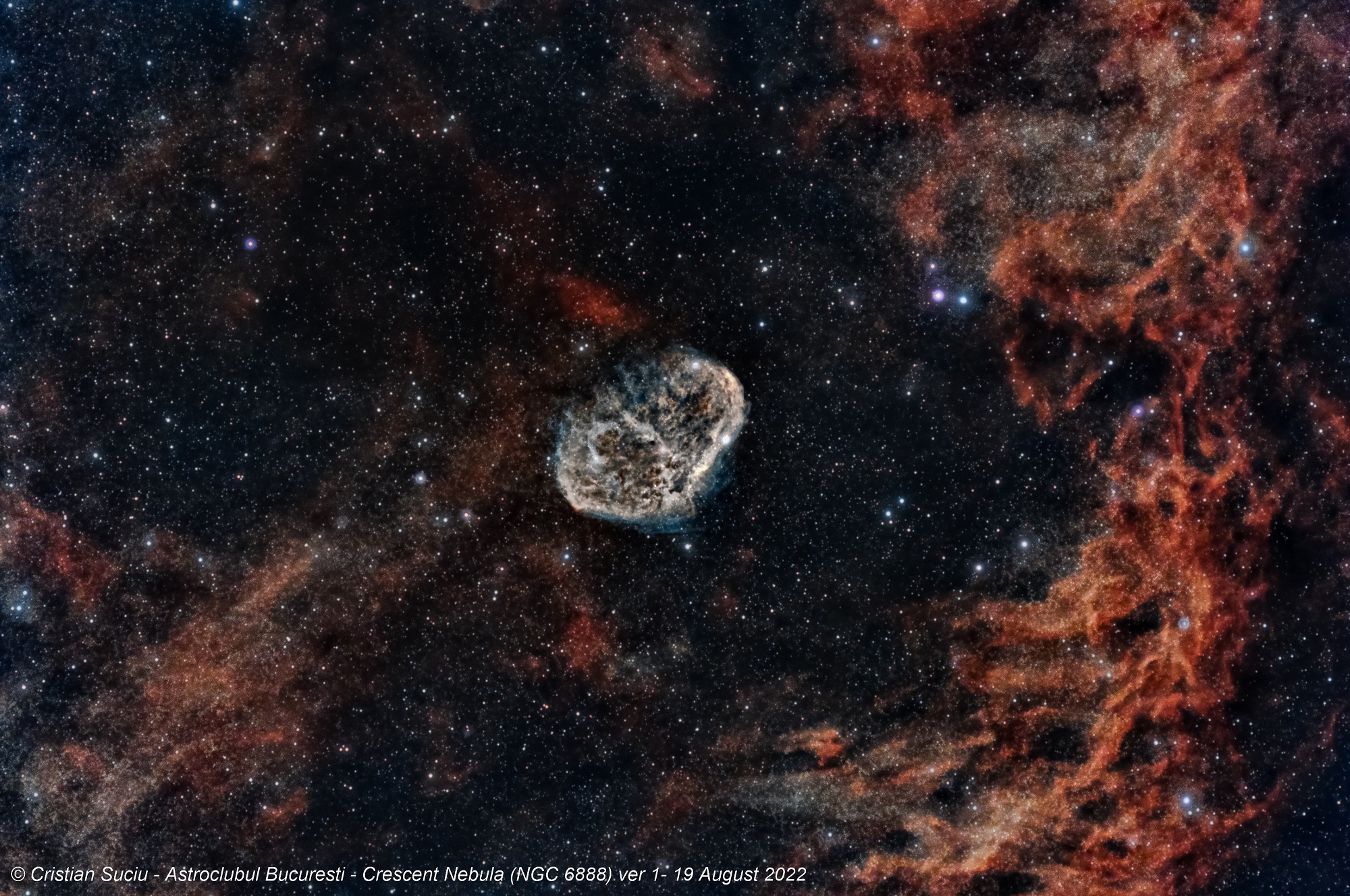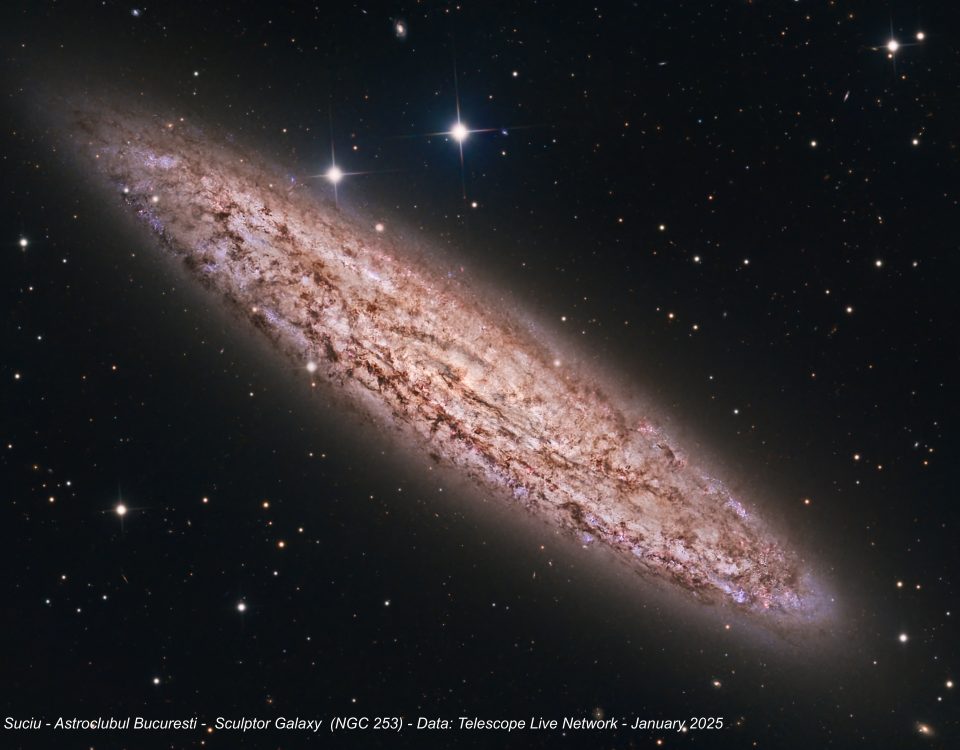Polaris de Bogdan Stanciu si Daniel Berteșteanu

Crescent Nebula (NGC 6888, Caldwell 7, Sharpless 105) de Cristian Suciu
septembrie 8, 2022
Soarele în H alpha de Radu Gherase
septembrie 16, 2022RO (English below)
Α Ursae Minoris, mult mai populară sub numele de Polaris sau Steaua Polară, este cea mai strălucitoare stea din constelația Carul Mic, dar este mult mai familiară ca reper de navigație de câteva sute de ani, fiind la doar 1° distanță față de polul nord ceresc și totodată fiind un astru relativ static pe bolta cerească boreală.
Deși ochiului liber, Polaris ni se pare că este o stea singulară, ca multe alte cazuri, aceasta este de fapt o stea triplă, formată din:
– Componenta principală α UMi Aa – o supergigantă portocalie de clasă spectrală F7, deci mai evoluată decât Soarele, cu o masă de 5,4 ori mai mare și o luminozitate de cca. 1260 ori mai mare. Comparativ cu stelele mai fierbinți, stelele de clasă F au liniile de hidrogen din seria Balmer mai puțin intense dar se remarcă prin prezența benzii G corespunzătoare moleculelor de CH.
De asemenea, în spectrul acestor stele liniile metalice de sodiu, magneziu și fier încep să prindă contur.
Vârsta α UMi Aa este estimată la doar 70 milioane de ani fiind o cefeidă clasică cu o variație a magnitudinii între 1,86 și 2,13
– Α UMi Ab – componenta foarte apropiată de α UMi Aa, este de tip spectral F6, având o masă de 1,4 ori mai mare că a Soarelui. Are o magnitudine aparentă de 9,2 și orbitează la aprox. 3 UA față de steaua principală.
– Α UMi B – componenta mai îndepărtată, este de tip spectral F3 și este de 1,4 ori mai masivă decât Soarele. Are o orbită la distanță de aprox. 2400 UA față de dubletul α UMi Aa + Ab și are o magnitudine aparentă de 8,7.
Α UMi B este relativ ușor de observat printr-un telescop mediu, fiind mai îndepărtată de luminozitatea foarte mare a dubletului primar.
Distanța față de acest sistem a suferit multe modificări de-a lungul timpului, în prezent fiind acceptată valoarea de 448 ani-lumină – calculată de misiunea GAIA EDR3 (decembrie 2020).
Captura foto a fost realizată folosind rețeaua remote SLOOH, iar spectrul stelei a fost capturat folosind un telescop Newtonian 200 mm și spectrograful Alpy 600.
Autori: Bogdan Stanciu, Daniel Berteșteanu
EN





